A Garden Tour True Confession
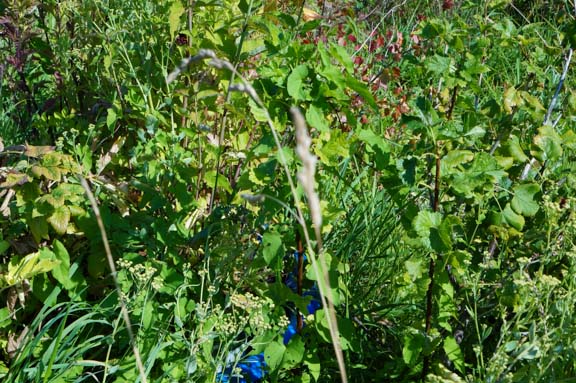
In general, my photos in this blog paint an incredible garden full of wonders – and don’t get me wrong – it most definitely is – but I have to say that those snapshots are of moments in time in very specific places. I try to capture the magic. My 50mm lens blocks out a lot of the noisy background. The truth is, garden chaos rules in our backyard, and although it might be nice to have one of those showpiece gardens on the garden club tours, mine is not one of those. This post is about the other side of the story – or rather, the garden.
Granted, I started with a neglected old cow field, trampled by hooves, full of nettles, thistles, and grasses, the only things that could grow in this cracked clay, sometimes rocky, “soil.” I had llamas back then. It worked for them. I had a small organic vegetable garden and a small plot of garlic, which evolved into multiple plots of garlic, which later transformed into a menagerie of plants for bees, wildlife, and humans, now dominated by willows, herbs, and assorted fruits. It is forever evolving.
I had a vision of a Utopian jungle in which we all lived in abundance and harmony. I still believe in that vision.
But the Reality is…
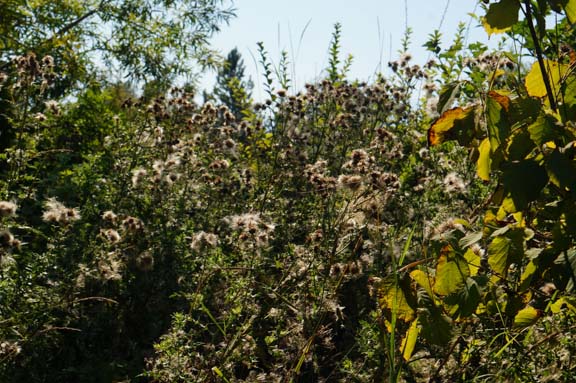
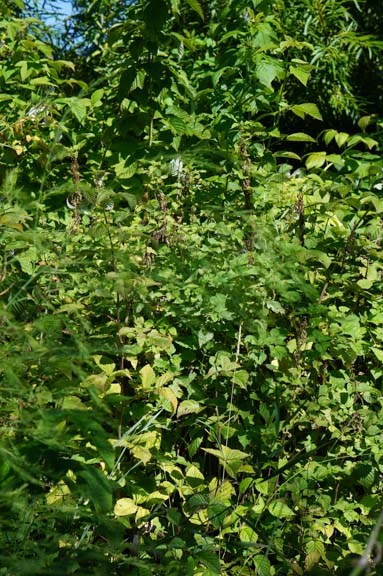
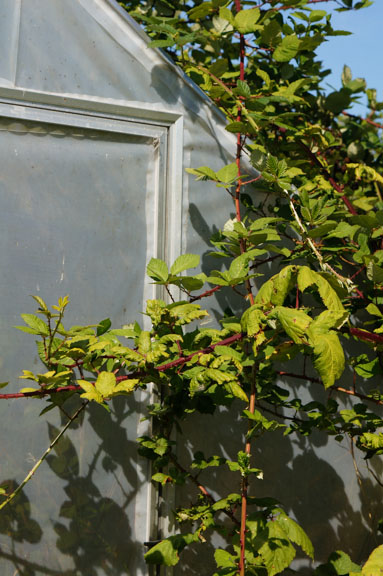
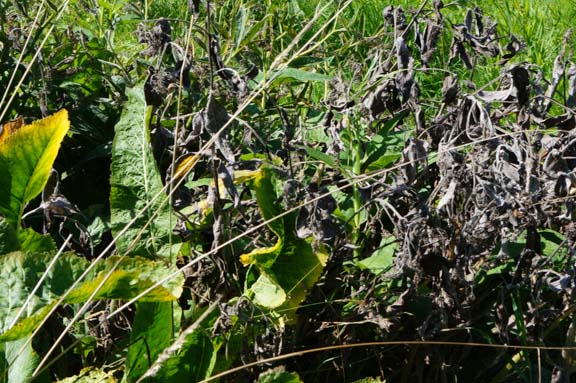
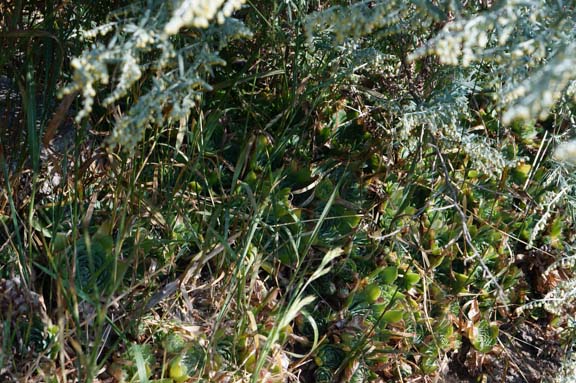
Now it is mid-September, and as in every year, I am scratching my head and wondering where the summer went. There were the usual and a few extraordinary events: lots of birthdays & family get-togethers, a wedding, a new grandchild, out-of-town guests, side trips, a few hikes and outdoor adventures, but not as many because of all the smoke from wildfires. There were baseball games, barbecues, watermelon, corn, cold beverages…. We finished off the season with a fantastic family vacation that involved sandy beaches, warm seawater, and palm trees. Throughout, there were lots of flowers and berries… and now there are the fruits of fall – the squashes, plums, and apples (thank you, bees).
I walk through the garden and am overcome by the sheer biomass. Everywhere I look is chaos. I started with such hope in the spring, neatly planting so many things that got swallowed up by everything around them, or by the deer, or both. The morning glory/bindweed is once again completely smothering areas where I had worked very hard to eradicate it. As I push the tall grasses aside (which I have scythed twice already), all I can see is what needs to be done but which I cannot possibly do. We pick our battles. Apples and plums are falling on the ground. Seaberries, blackberries, and Cornelian cherries all need to be picked, along with seeds and herbs. There is not much time left. We are already at the Equinox tipping point of light.
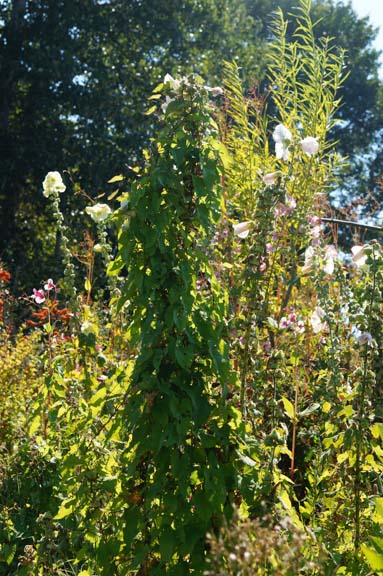

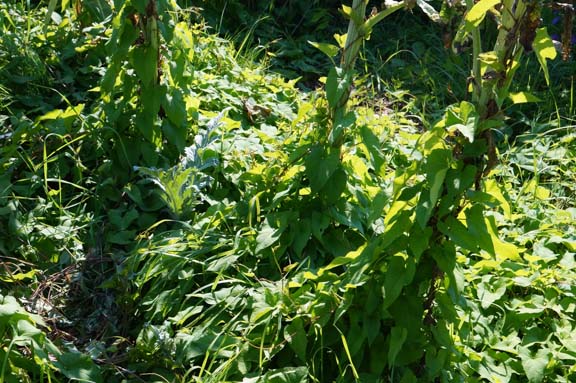
The Dark Side of Garden Chaos
I post these photos to document a small part of what I am up against. Surely, I think, the answer is to just plant more plants! Simply fill in the understories with groundcovers and mid-level plants and not give the weeds a chance to see the light. The strategy is to optimize what I have and to be careful not to spread out more in the process, right? Do I need an excuse to plant more plants? The grasses and thistles mock my soul-searching. They laugh uproariously at my efforts. I am not amused.
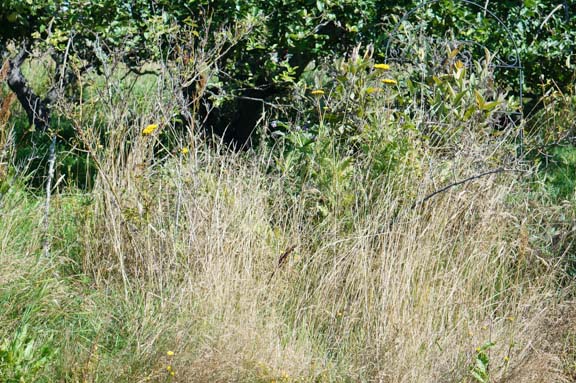


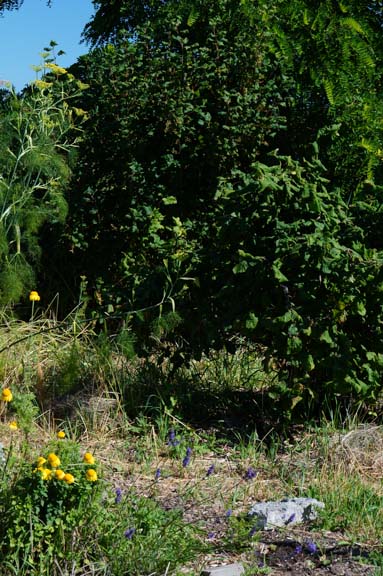
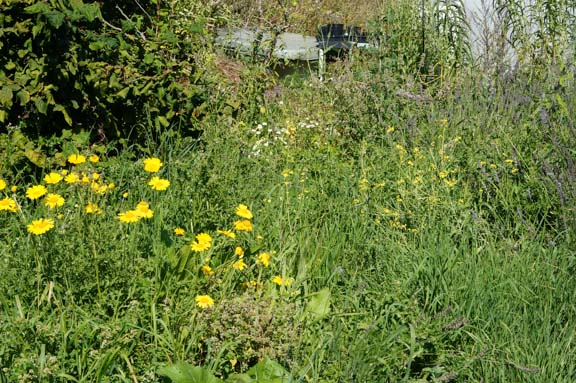
The Problem, of Course, is the Solution
I apply the chop & drop mulch mantra; but so far, the grass has grown through that tactic. Weeds are becoming easier to pull out, true, but in the space of a month, they have exploded in that final surge to produce seed before winter. Smothering with paper or cardboard and adding more mulch on top might set them back, but similar attempts to kill morning glory and quackgrass have failed. They survived an entire year of being covered by black plastic! Unfortunately, I am now resigned to recognizing that bindweed will always be here; due diligence and persistence are my only hopes of slowing it down.
I am 66 years old. I am one person, armed with a shovel and a pair of pruners. Do I really need this?
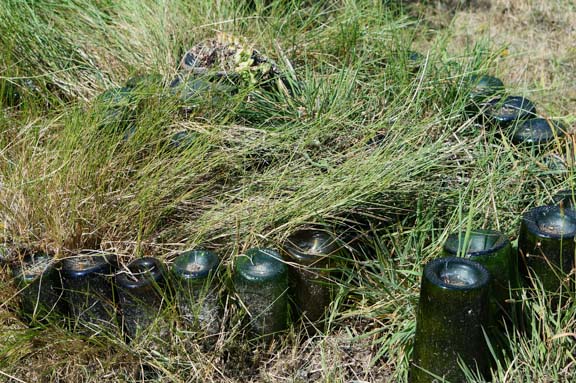
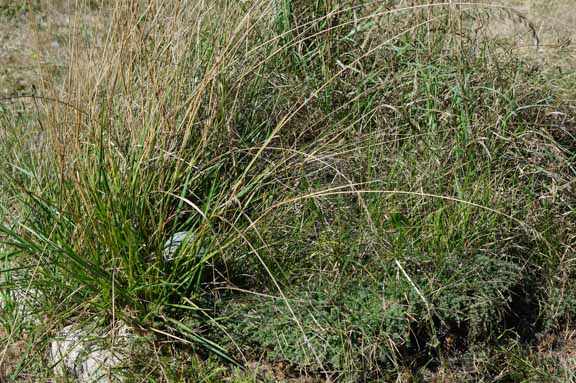
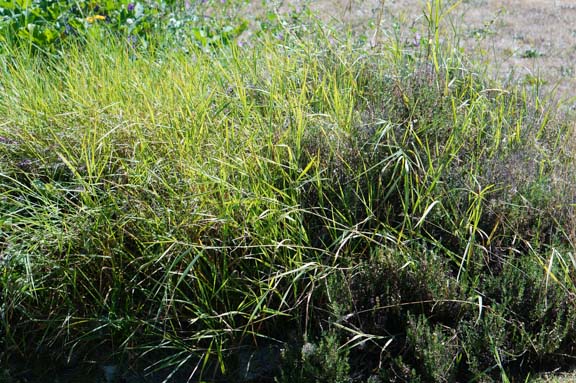
To make things more discouraging, toward the end of the season, I discovered that parts of my precision dripline water system that I had installed this spring, had failed. Clogged with silt from our new piped irrigation ditch, it had ceased delivering the steady drip of water I had counted on. (Need a better filter!) I didn’t realize how bad it was until the plants showed definite signs of dying. Or were they stressed because of the voles digging tunnels beneath the heavy mulch cover, thereby exposing their roots to air? The rock-hard ground around them collapsed beneath my feet. Stomp on no-till “soft” clay soil? Is that not blasphemy? (Sigh.) I hauled a sprinkler over to the plants, the old-fashioned way, and turned it on, spraying precious water into the air and scattering it all about. Watering weeds. Not precision. Not drip. But wet.
I came back to check on things awhile later, and to my surprise, a dozen or so fat brown birds (bigger than a sparrow; smaller than a quail) suddenly flew up in front of me to the willows. One, however, did not see me coming. She was taking a bath almost right on top of the sprinkler, lifting her wings up to catch the spray, turning this way and that, totally absorbed in the fun.
It was an Ah Ha! moment.
THIS, I realized, is why I garden the way I do.
It’s not to have a showpiece garden, to give educational tours, or to sell produce at the market. In fact, I would rather buy veggies from the hard-working young people with a stand down the road.
No, I will never have the neat pathways and orderly rows of conventional gardens. Not that it isn’t possible; just that I have too many other things I want to do. And more importantly, by allowing a certain level of garden chaos, I invite communities that might not otherwise flourish.
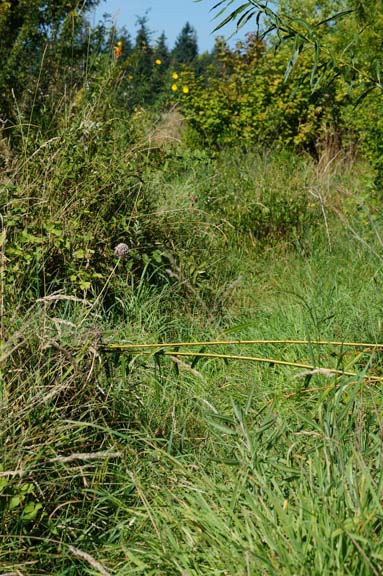


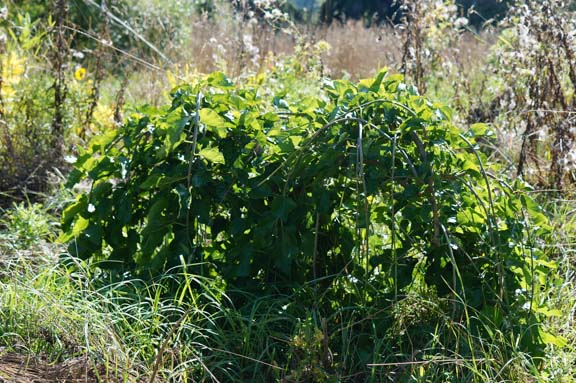
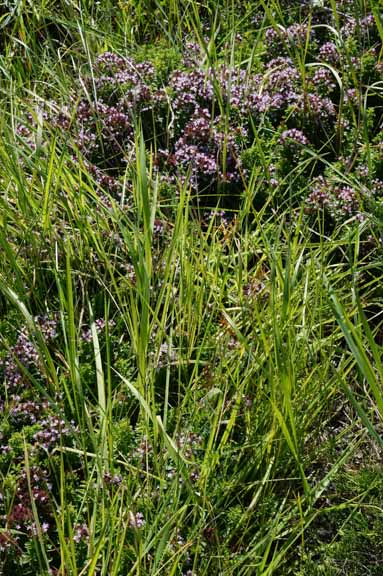
Yes, I have aphids and the ants that love them. I also have a gargantuan hive of bad-assed, bald-faced hornets, who don’t seem to pay the slightest attention to me, but do a tremendous job of keeping insects in check.
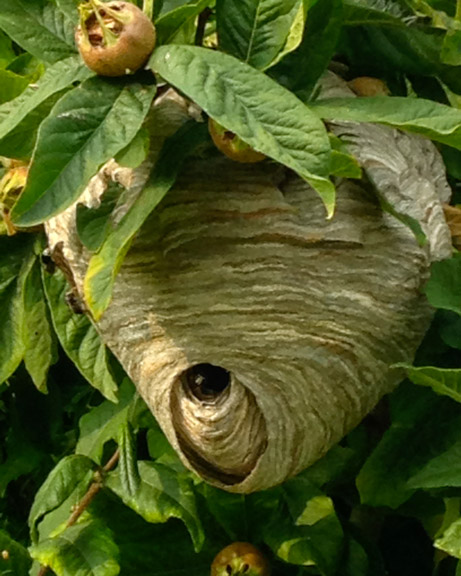
Yes, the hollyhocks take up a ton of room, their tall spires punctuating the sky with exclamations. The bees are buzzing from one flower to the next, and it is almost October. Our Aussie dog walks his nth time around the house, making sure all is in order, and flushes up a family of quail, which we hadn’t seen around here for many years. As I pick the Autumn Olives, several Cedar Waxwings join in the harvest, somewhat leery of my presence, but brazen enough to join in. A deer and her yearling show up for their breakfast browse at the Barbolian smorgasbord, and I no longer bother shooing them off (nor does the dog). After all, we all need to eat.
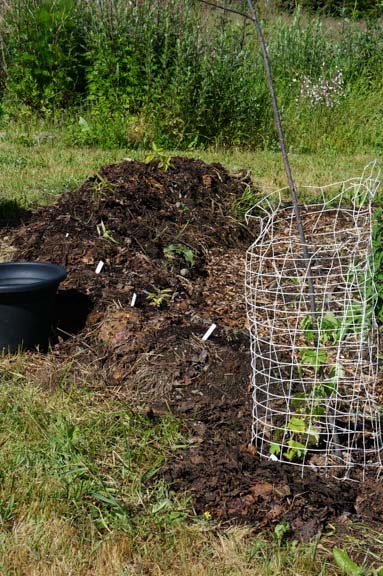

While I contemplate the sanity of planting more so everyone has enough, I am learning to let go. I don’t need to pick every last cherry, just because I grow it — just pick what we can use and a little extra for sharing; leave the rest for the wild foragers.
And near the end of the day, I just have to stop and listen. Frogs. I thought we had lost our frogs when they piped the irrigation ditch. Apparently not. THAT, too, is why I garden the way I do.
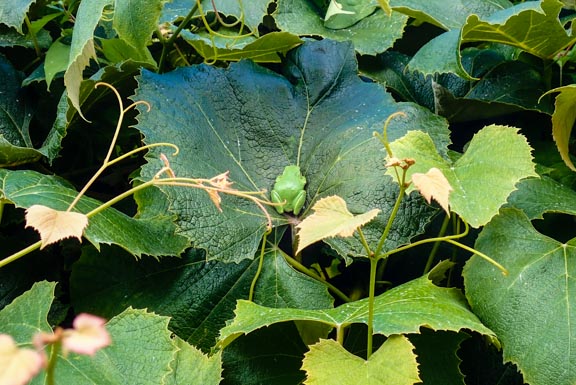
Clearly, neatness and control are overrated.
I say, Embrace Chaos.
Life is good.
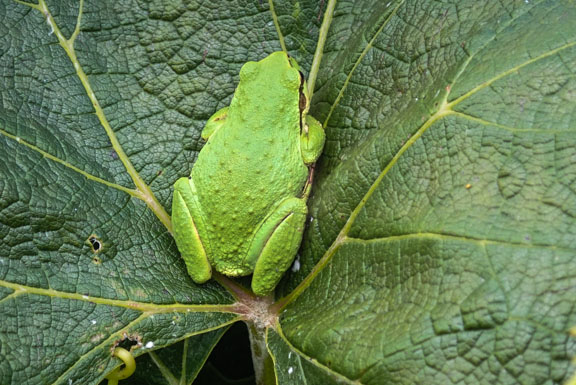
Also, I meant to say that your property is lovely, both the befores and the afters (although that hornet nest is terrifying).
I love this post! I, too, struggle with overwhelm and chores and getting it all done without running myself ragged. But when I find a small grass snake under a bucket, or walk by my elderberry bush with munched-by-something leaves, or see fireflies dancing in the yard, I remember why we are trying to do what we do, without chemicals… as I scratch at all my chigger bites. 🙂
I’ll do what I can and get to the rest later. Or not. It’s all good.
Snakes, Chiggers & Fireflies – oh, my! I am not sure where you are, but your beautiful description is exactly how I feel. The key, I think, is in doing what we can, and in the process, finding the magic in small things. “It’s all good” pretty much sums it up, does it not? Thanks for your heartfelt comments, Cheverly.